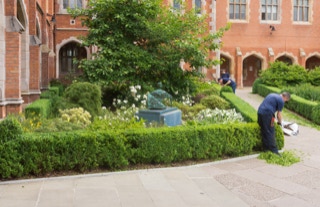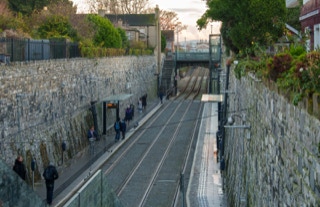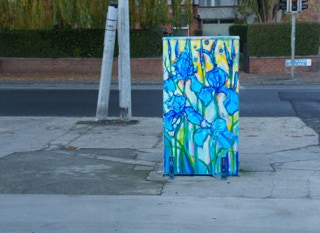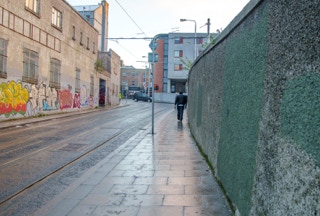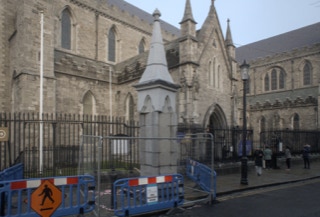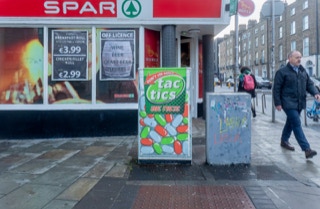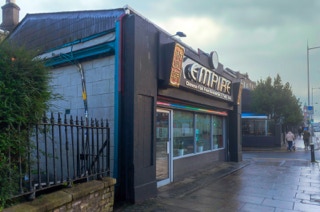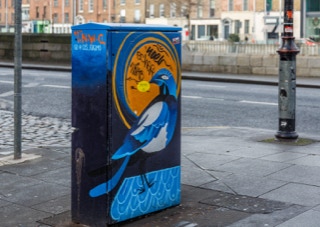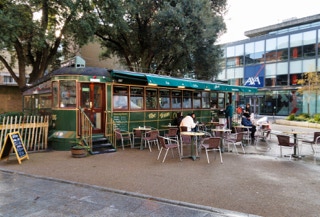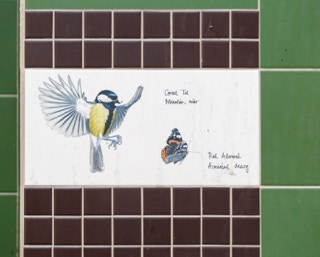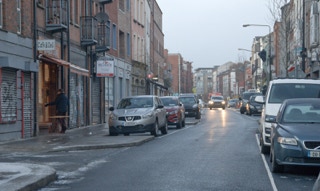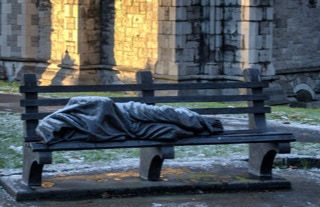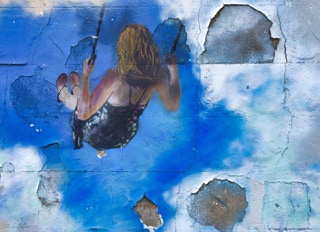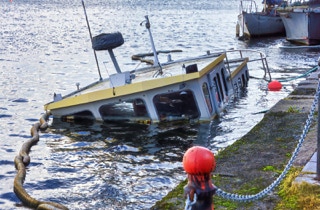TEMPLE BAR AT CHRISTMAS [THE WEATHER WAS NOT AS BAD AS EXPECTED BUT IT WAS REALLY COLD]
A word of warning ... I have noticed that many of the restaurants have increased the prices for the month of December or their special lunch and early-bird menus are not available,
Temple Bar is the main tourist area in Dublin and it attracts many Stag and Hen parties from the UK but today [10 December 2022] the mix of people was a bit different as there were many locals trying to find the perfect Christmas present.
Temple Bar is an area on the south bank of the River Liffey in central Dublin, Ireland. The area is bounded by the Liffey to the north, Dame Street to the south, Westmoreland Street to the east and Fishamble Street to the west. It is promoted as Dublin's 'cultural quarter' and, as a centre of Dublin's city centre's nightlife, is a tourist destination. Temple Bar is in the Dublin 2 postal district.
It is generally thought that the street known as Temple Bar got its name from the Temple family, whose progenitor Sir William Temple built a house and gardens there in the early 1600s. Temple had moved to Ireland in 1599 with the expeditionary force of the Earl of Essex, for whom he served as secretary. (He had previously been secretary of Sir Philip Sydney until the latter was killed in battle.) After Essex was beheaded for treason in 1601, Temple "retired into private life", but he was then solicited to become provost of Trinity College, serving from 1609 until his death in 1627 at age 72. William Temple's son John became the "Master of the Rolls in Ireland" and was the author of a famous pamphlet excoriating the native Irish population for an uprising in 1641. John's son William Temple became a famous English statesman.
The area is the location of a number of cultural institutions, including the Irish Photography Centre (incorporating the Dublin Institute of Photography, the National Photographic Archive and the Gallery of Photography), the Ark Children's Cultural Centre, the Irish Film Institute, incorporating the Irish Film Archive, the Button Factory, the Arthouse Multimedia Centre, Temple Bar Gallery and Studios, the Project Arts Centre, the Gaiety School of Acting, IBAT College Dublin, the New Theatre, as well as the Irish Stock Exchange.
At night the area is a centre for nightlife, with various tourist-focused nightclubs, restaurants and bars. Pubs in the area include The Temple Bar pub, The Porterhouse, The Oliver St. John Gogarty, The Turk's Head, The Quays Bar, The Foggy Dew, The Auld Dubliner, The Stag's Head, Bad Bobs and Busker's Bar.
The area has two renovated squares – Meetinghouse Square and the central Temple Bar Square. The Temple Bar Book Market is held on Saturdays and Sundays in Temple Bar Square. Meetinghouse Square, which takes its name from the nearby Quaker Meeting House, is used for outdoor film screenings in the summer months. Since summer 2004, Meetinghouse Square is also home to the 'Speaker's Square' project (an area of public speaking) and to the 'Temple Bar Food Market' on Saturdays.
The 'Cow's Lane Market' is a fashion and design market which takes place on Cow's Lane on Saturdays.
